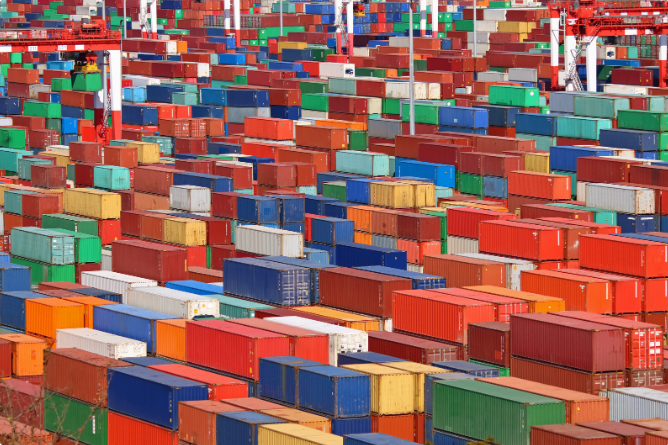
Although prices likely won’t return to post-invasion highs, tight supply and ongoing supply risk will keep costs historically elevated
We’re likely past the shock commodity price increases seen earlier this year, but persistent high prices for many inputs will support higher-for-longer inflation in 2023. In response to high commodity prices, firms should continue to prioritize efforts to manage costs and protect margins. In addition to price increases, strategies include: reducing supply chain inefficiencies, such as packaging optimization to lower shipping costs; utilizing hedging strategies, including commodities options and longer-term contracts; input substitutions; and shifting product offerings toward higher-margin goods.
Overview
After Russia’s invasion of Ukraine, spot prices for energy, metals, and food commodities reached all-time or multi-year highs on concerns of supply disruption. The jump followed months of rising prices stemming from a sudden demand acceleration that began after pandemic lockdowns lifted in 2021. For most commodities—with the notable exception of natural gas—prices have eased or stabilized since April. Although each commodity market has its own dynamics, there are three primary drivers of the recent price slump: a weakening commodity demand outlook amid slowing global growth, softer demand from China given the persistence of the Zero-COVID policy, and the fact that war-related supply disruption has not been as severe as the market anticipated in March.
Our View
The recent price drop is well founded, and prices for most commodities (except natural gas) are unlikely to climb back to post-invasion levels in the short term. However, the decline probably isn’t the start of a new trend. Global energy supply remains exceptionally tight; shortages and high prices of energy inputs will continue to feed into prices for other commodities next year.
Shipping: Globally, shipping costs have eased from highs reached in early 2022, but remain well above pre-pandemic levels. The fact that costs remain high despite the absence of major new disruptors suggests the persistence of medium-term dislocation. In an environment characterized by heightened geopolitical tensions, rising trade barriers, and shifting supply chains, it is difficult to see costs easing quickly back to pre-pandemic norms. Further disruptions related to China’s Zero-COVID policy and labor strikes around the world remain probable, but a strong recovery in commercial air travel and continued logistics capacity expansion will keep price increases contained. Cost dynamics will vary across regions and transport channels.
Oil: Global oil supply remains tight; the recent price slump stems from weak consumption in China due to the persistence of its zero-COVID policy, and on evidence of weaker consumption in developed markets as high oil prices destroy some demand. However, oil consumption is likely to remain buoyant next year for several reasons, even if the global economy enters a recession. International travel continues to recover and still has considerable room to run, and Europe’s severe natural gas shortages are driving a switch toward diesel and other distillates as substitutes. In addition, Russia’s declining production, a runoff in releases from strategic petroleum reserves later this year, the threat of further market dislocation, and weak supply growth from OPEC and the US mean oil prices are unlikely to drop much further.
Natural gas: Russia’s cutoff in gas flows to Europe will exert serious upward pressure on natural gas costs globally through at least the end of 2023. Since natural gas is not fully fungible, cost pressures will be most intense in Europe. However, the EU’s growing imports of liquefied natural gas (LNG) will put pressure on gas supplies in developed Asia and the US. Russian gas is increasingly making its way to China, which will keep electricity and energy input costs lower there but increase pressure on developed-market benchmarks. Natural gas costs in Europe will be high enough to significantly curb production, driving up prices for metals, fertilizers, and other commodities.
Metals: Metals markets are currently experiencing two primary cross-currents: on the one hand, sinking demand amid a global manufacturing slowdown and China’s sputtering construction activity; on the other, production declines caused by high energy input costs. For copper, prices will nonetheless remain relatively high even in an economic slowdown due to a secular increase in demand caused by the energy transition. In contrast, iron ore prices are under severe pressure from China’s construction slowdown. Prices will likely remain low next year, but any pickup in China’s construction activity or signs of imminent stimulus will drive a price rebound.
Food commodities: After a post-invasion surge, prices for grains and vegetable oils have eased in recent weeks, helped by a deal to export Ukrainian wheat and sanctions carve-outs on food and fertilizer exports from Russia. Yet, prices remain historically high, and price risks are tilted to the upside through 2023 due to continued war-related supply risk, rising agricultural input cost pressures, particularly diesel and fertilizers, and potential supply disruption from weather events in a fundamentally undersupplied market.
At FrontierView, our mission is to help our clients grow and win in their most important markets. We are excited to share that FiscalNote, a leading technology provider of global policy and market intelligence has acquired FrontierView. We will continue to cover issues and topics driving growth in your business, while fully leveraging FiscalNote’s portfolio within the global risk, ESG, and geopolitical advisory product suite.
Subscribe to our weekly newsletter The Lens published by our Global Economics and Scenarios team which highlights high-impact developments and trends for business professionals. For full access to our offerings, start your free trial today and download our complimentary mobile app, available on iOS and Android.

